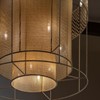







































































Mérida, Yucatán, Mexico
Agent: Cliff Jacobs - Managing Principal Estate Agent & CEO (Nat.Dpl.Hotel Man (UJ). M.P.R.E.)
Agent Cellphone: +27 (0) 84 413 1071 / +27 (0) 61 716 6951
Agent Office Number: +27 (0) 21 554 0283
Agent Email Address: cliff@exquisitehotelconsultants.com
Type: Boutique Hotel
Bedrooms: 7
Bathrooms: 8
Showers: 8
Parking: 0
Yield: Not Disclosed
Mérida, Yucatán
Mérida is the capital and largest city in Yucatan state in Mexico, as well as the largest city of the Yucatán Peninsula. The city is located in the northwest part of the state, about 35 kilometres (22 miles) off the coast of the Gulf of Mexico. The city is also the municipal seat of the Municipality of Mérida, which includes the city and the areas around it.
According to the 2015 census, the population of Mérida was 892,363, ranking 14th among the most populous Mexican cities. The Greater Mérida metropolitan area includes the municipalities of Mérida, Umán and Kanasín and had a population of 1,035,238 in the 2010 census. The municipality's area is 858.41 km2 (331.43 sq mi). Among the four cities that share the same name around the world, it is the largest – the other three being in Spain, Venezuela, and the Philippines.
In 2019 it was considered the second safest city in the Americas only behind Quebec City, contrasting with the high rates of insecurity in the rest of Mexico.
The city, like much of the state, has heavy Mayan, Spanish, French, British, Lebanese and to a lesser extent Dutch influences. Mérida has the highest percentage of indigenous population within any large city in Mexico. The Maya are approximately 60% of the population.
History
There were three Spanish conquistadors named "Francisco de Montejo": Francisco de Montejo "el Adelantado" ("The Lieutenant", the eldest); Francisco de Montejo y León "el Mozo" ("The Boy", his son); and Francisco de Montejo "el Sobrino" ("The Nephew"). Mérida was founded in 1542 by Montejo y León ("el Mozo") and named after the town of Mérida in Extremadura, Spain. It was built on the site of the Maya city of T'hó, which was also called Ichkanzihóo or Ichcaanzihó in reference to its pyramids.
Carved Maya stones from ancient T'ho were used to build the Spanish colonial buildings which are numerous in downtown Mérida; these stones are visible, for instance, in the walls of the main cathedral. Much of Mérida's architecture from the colonial period through the 18th century and 19th century is still standing in the centro histórico of the city. From colonial times through the mid-19th century, Mérida was a walled city intended to protect the Peninsular and Criollo residents from periodic revolts by the indigenous Maya. Several of the old Spanish city gates survive, but modern Mérida has expanded well beyond the old city walls.
Late in the 19th century and the early 20th Century, the area surrounding Mérida prospered from the production of henequén. For a brief period, around the turn of the 20th century, Mérida was said to house more millionaires than any other city in the world. The result of this concentration of wealth can still be seen today. Many large and elaborate homes still line the main avenue called Paseo de Montejo, though few are occupied today by individual families. Many of these homes have been restored and now serve as office buildings for banks and insurance companies. Korean immigration to Mexico began in 1905 when more than a thousand people arrived in Yucatán from the city of Incheon. These first Korean migrants settled around Mérida as workers in henequen plantations.
Completed in 1911 by Camilo and Ernesto Cámara Zavala, “Las Casas Gemelas” (The Twin Houses), are two side by side French and Spanish style mansions that remain from the early 20th Century. They are two of only a few houses that are still used as residences on Paseo Montejo from that era. They are owned by the Barbachano and Molina Méndez families. During the Porfiriato, the Barbachano house held cultural events that hosted artists, poets, and writers. In the mid-1900s, the Barbachanos hosted aristocrats including Princess Grace and Prince Ranier of Monaco, as well as first lady of the U.S., Jacqueline Kennedy.
Mérida has one of the largest centro histórico districts in the Americas (surpassed only by Mexico City and Havana, Cuba). Colonial homes line the city streets to this day, in various states of disrepair and renovation; the historical center of Mérida is currently undergoing a minor renaissance as more and more people are moving into the old buildings and reviving their former glory.
In August 1993, Pope John Paul II visited the city on his third trip to Mexico. The city has been host to two bilateral United States – Mexico conferences, the first in 1999 (Bill Clinton – Ernesto Zedillo) and the second in 2007 (George W. Bush – Felipe Calderón).
In June 2007, Mérida moved its city museum to the renovated Post Office building next to the downtown market. The Museum of the City of Mérida houses important artifacts from the city's history, as well as an art gallery. Mérida hosted the VI Summit of Association of Caribbean States, in April 2014.
Mérida is the cultural and financial capital of the Yucatán Peninsula, as well as the capital city of the state of Yucatán. In recent years, important science competitions and World events have been held in Mérida – FITA Archery World Cup Finals, the International Cosmic Ray Conference, a Physics Olympiad, etc.
Geography
Mérida is located in the northwest part of the state of Yucatán, which occupies the northern portion of the Yucatán Peninsula. To the east is the state of Quintana Roo, to the west is the state of Campeche, to the north is the Gulf of Mexico, and far to the south is the state of Chiapas. The city is also located in the Chicxulub Crater. It has a very flat topography and is only 9 metres (30 ft) above sea level. The land outside of Mérida is covered with smaller scrub trees and former henequen fields. Almost no surface water exists, but several cenotes (underground springs and rivers) are found across the state. Mérida has a centro histórico typical of colonial Spanish cities. The street grid is based on odd-numbered streets running east/west and even-numbered streets running north/south, with Calles 60 and 61 bounding the "Plaza Grande" in the heart of the city. The more affluent neighborhoods are located to the north and the most densely populated areas are to the south. The Centro Histórico area is becoming increasingly popular with Americans and other expatriates who are rescuing and restoring the classic colonial structures. In 2007 the Los Angeles Times recently noted this surge of interest in rescuing Mérida's historic downtown.
Climate
Mérida features a tropical wet and dry climate (Köppen: Aw). The city lies in the trade wind belt close to the Tropic of Cancer, with the prevailing wind from the east. Mérida's climate is hot and its humidity is moderate to high, depending on the time of year. The average annual high temperature is 33 °C (91 °F), ranging from 28 °C (82 °F) in January to 36 °C (97 °F) in May, but temperatures often rise above 38 °C (100 °F) in the afternoon in this time. Low temperatures range between 18 °C (64 °F) in January to 23 °C (73 °F) in May and June. It is most often a few degrees hotter in Mérida than in coastal areas due to its inland location and low elevation. The rainy season runs from June through October, associated with the Mexican monsoon which draws warm, moist air landward. Easterly waves and tropical storms also affect the area during this season.
About the Owners
The owners acquired the property in 2016 with the idea of creating a boutique hotel designed as a space where guests feel at home, this is how their boutique hotel was born distinguishing itself by personalised attention taking care of every detail for guests; only worrying about them enjoying their stay.
Tired of their lives as executives in Mexico City and the excess of work trips and a high level of stress, they decided that they wanted to have a place where they could forget everything and start to enjoy their lives.
Years Later this was the dream where their boutique hotel was born. The owners had to spend several years and overcome many challenges, to achieve it but today they are proud to have this jewel and be able to share it with people from all over the world.
The money, time and love they put into this project have resulted in a property that even exceeds what they had imagined.
They are very fortunate to have had the help of the great architect Julio Reyes and his team, who created this work of art that the owners can now enjoy. His attention to details such as ventilation, custom design of many elements such as doors and lighting, are just a sample of all the work and talent that helps create simplicity and lightness that helps you relax and enjoy while projecting luxury and comfort.
Their intention is that you have a wonderful experience, for which they specifically trust Lorena (our administrator) and the entire team. The owners want that at the end of the day every guest of their boutique hotel is looking for a unique and memorable experience, that is why they are committed to doing everything possible to make staying here a pleasure.
Rooms
With only 7 rooms, the experience of our guests is always special.
We seek to create an environment that, on the one hand, has the relaxed feeling of a warm home, while having the luxury and comfort worthy of the most demanding clients…
Superior Room
A cosy room with the natural lighting of this beautiful city.
Deluxe Room with Sofa Bed
Get ready to rest on your vacation with this room that suits your needs and comforts.
Grand Room with Balcony
Ideal for you to enjoy a perfect stay and view from the balcony.
Familiar Room
Designed to make you feel at home.
Our rooms give you the space and privacy you need to enjoy your vacation.
Services
We want you to feel at home and rest and enjoy yourself with us.
We have different amenities to give you a complete experience, so, you can enjoy services such as massages, breakfast included, tours…
Our services include:
Activities
We have alliances with some tour operators that offer trips to the attractions near Mérida, so you don't miss out amazing places like Chichen Itza (wonder of the world) to see the flamingos in Celestún, wonderful cenotes and beaches worthy of a postcard.
We also have contact with suppliers of unforgettable experiences, some of whom can come to our facilities to offer them some activities like a mezcal or tequila tasting, cooking or dance classes or just a romantic lunch or dinner.
Ask us directly for ideas and we will gladly help you make your trip an unforgettable experience. We also know the area and the city very well so we can recommend places and itineraries. Finally, we clarify that we don´t have parking spaces, but we have an agreement with a nearby parking lot in case you need it.
To get more information about the activities available, you can contact us and we will gladly help you make your experience unforgettable.













































Cliff Jacobs (Nat Dpl Hotel Man (UJ). MPRE. GA Level 5 TEFL) Managing Principal / CEO Exquisite Hotel Consultants (Pty) Ltd Mobile: +27 (0) 84 413 1071 / +27 (0) 61 716 6951 Email: cliff@exquisitehotelconsultants.com Skype: cliff.jacobs Web: https://www.exquisitehotelconsultants.com © All rights reserved Terms and Conditions apply Scroll down to view our Hospitality Properties and Businesses for sale or lease or lease-to-buy or partnership arrangement or management agreement arrangement